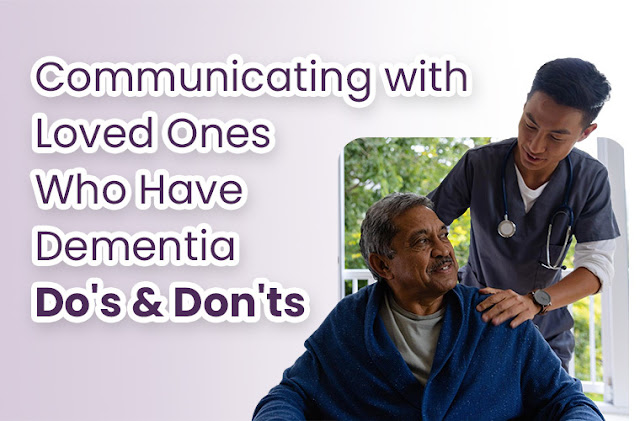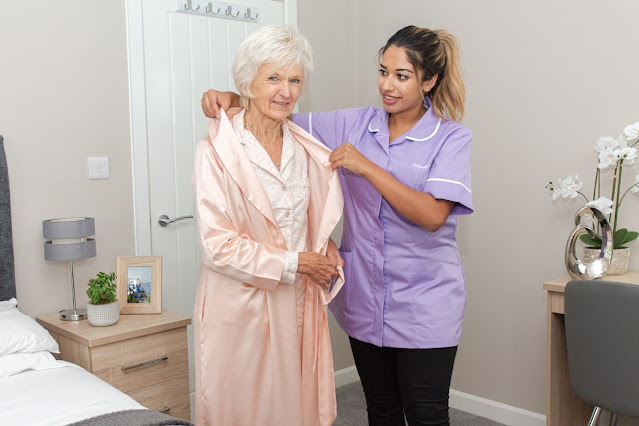Empathy + Experience = Strong Impression
Caring for individuals with dementia has been one of the most meaningful aspects of my professional journey in healthcare. Dementia is more than just memory loss - it affects communication, understanding, behavior, and emotions. Every individual’s journey with dementia is unique, and so is the way we interact with them. Over time, I have gathered valuable lessons that have shaped the way I communicate with these patients, helping me form deeper connections and provide better care.
Understanding Dementia and Its Impact on Communication
Dementia is a progressive condition that affects cognitive functions such as memory, language, and reasoning. The most common form is Alzheimer’s disease, but there are other types such as vascular dementia, Lewy body dementia, and frontotemporal dementia.
Communication challenges may include:
-
Difficulty finding the right words
-
Repetition or confusion
-
Loss of understanding or interpreting non-verbal cues
-
Emotional changes such as frustration, anxiety, or withdrawal
Understanding these changes is the first step to meaningful communication.
Lesson 1: Empathy Comes First
Empathy is the foundation of all good communication, but with dementia patients, it becomes even more critical. When I approach a patient with empathy - truly trying to understand their feelings and challenges - it builds trust.
Practical Example:
I once cared for a resident who would become agitated during personal care tasks. Instead of rushing, I began by sitting at her eye level, holding her hand, and simply saying, “I’m here to help you. We can go at your pace.” This simple act of empathy softened her resistance and helped her feel safe.
Empathy helps to:
-
Reduce anxiety and fear
-
Build rapport and trust
-
Create a calm environment for both patient and caregiver
Lesson 2: Listen More, Speak Less
People with dementia may struggle to express themselves clearly. Sometimes, we’re tempted to finish their sentences or correct them. However, I’ve learned that active listening is far more effective.
Tips for better listening:
-
Give them time to speak, even if it takes a while
-
Maintain eye contact and nod to show you're engaged
-
Watch their facial expressions and body language
Even when their words don’t make sense, their feelings are real. Listening helps us understand what they’re trying to communicate emotionally, if not always verbally.
Lesson 3: Use Simple and Clear Language
As dementia progresses, processing complex information becomes harder. I’ve learned to adapt my language to make communication easier.
How to simplify communication:
-
Use short, simple sentences
-
Speak slowly and clearly
-
Avoid medical jargon or long explanations
-
Ask one question at a time
Instead of saying, “Let’s go to the dining room after your shower, and then we’ll check your medication,” I now say, “Let’s take a shower first. Then we’ll eat.”
Lesson 4: Non-Verbal Communication Speaks Loudly
More than half of our communication is non-verbal. In dementia care, tone of voice, facial expression, gestures, and touch become vital tools.
What has worked for me:
-
A warm smile and gentle tone go a long way
-
Using hand gestures to indicate actions, such as eating or walking
-
A reassuring touch on the hand or shoulder (if the person is comfortable with it)
-
Demonstrating rather than telling
Sometimes, a patient may not understand my words, but a soft tone and kind expression convey comfort and safety.
Lesson 5: Routine and Familiarity Help Communication
Patients with dementia often find comfort in routine and familiarity. This extends to how we communicate with them. Using consistent phrases, tone, and patterns can reduce confusion.
What I’ve learned:
-
Greet them the same way each day
-
Introduce yourself each time, even if they don’t remember
-
Keep instructions consistent (e.g., always saying “Time for breakfast” in the same tone and order)
Familiarity creates predictability, which in turn reduces anxiety and improves cooperation.
Lesson 6: Managing Challenging Conversations
There are times when patients may become upset, aggressive, or confused. In such moments, logical explanations may not work. I’ve learned that redirection and reassurance work better than correction.
For example:
If a patient insists they need to “go home,” rather than saying “You are already home,” I might say, “Tell me about your home.” This opens a conversation and redirects their emotions, which often eases distress.
The goal is not to argue with their reality but to validate their emotions and gently guide them.
Lesson 7: Family Collaboration Improves Communication
Family members can provide insights into the patient’s history, preferences, and habits. I make it a point to collaborate closely with families.
How this helps:
-
Knowing the patient’s background helps tailor communication
-
Family photos, familiar music, or personal objects can aid interaction
-
Consistent communication with families also strengthens trust
I often ask families, “What calms them down when they’re upset?” or “What were their hobbies?”- this helps personalize care.
Final Thoughts: Empathy + Experience = A Strong Impression
Communicating with patients with dementia is not always easy, but every interaction is an opportunity to show compassion, patience, and respect. What I’ve learned is that:
-
Empathy softens the heart
-
Experience teaches patience
-
Kind communication leaves a lasting impression
By embracing these lessons, I’ve not only improved my ability to care for dementia patients, but I’ve also grown as a caregiver and as a person.
References and Further Reading:
-
Alzheimer’s Society (UK) – https://www.alzheimers.org.uk
-
Dementia UK – https://www.dementiauk.org
-
NHS Dementia Guide – https://www.nhs.uk/conditions/dementia/









